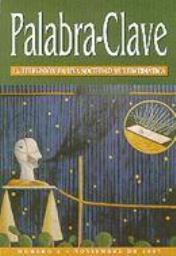Del plano a la esfera: libros e hipertextos
Abstract
In this article, the author points out the change observed in the perception of time, in daily life, in learning, in relation with mass media and in the dimension of aesthetics. Starting with the introduction of digital technologies in our public and private surroundings, the sense of time has changed. Since the late 80s, it is the speed which defines cultural scenary, zapping, clips, video games, spreadsheets, communication via fax, banking and e-mail. This transformation outlines the accelerated changes of the end of the twentieth century, and within its range of possibilities, it shapes and predicts the characteristics of next millennium. Time is the new quality of this syntax of objects in the end of this century. New technologies generate a different perception of time, unknown two decades ago. It is not only the emergence of more images but the speed by which they succeed themselves and hit each other stopping the differences between the spacially far and the spacially near. The author explains how these technological changes make special emphasis in the process that goes from reading in a linear way to a spherical reading of hipertexts and the impact of these new realities on the system of social and cultural perceptions of what is real. According to Sarlo, we are entering the technological threshold, which troubles both our old and new conceptions of reality and at the same time assures that virtual reality has involved imagination in a deep way.
Downloads
Downloads
How to Cite
Issue
Section
License
1. Proposed Policy for Journals That Offer Open Access
Authors who publish with this journal agree to the following terms:
- Authors retain copyright and grant the journal right of first publication with the work simultaneously licensed under a Creative Commons Attribution License that allows others to share the work with an acknowledgement of the work's authorship and initial publication in this journal.





